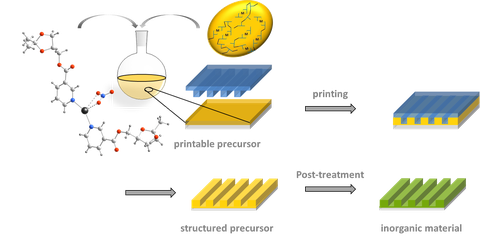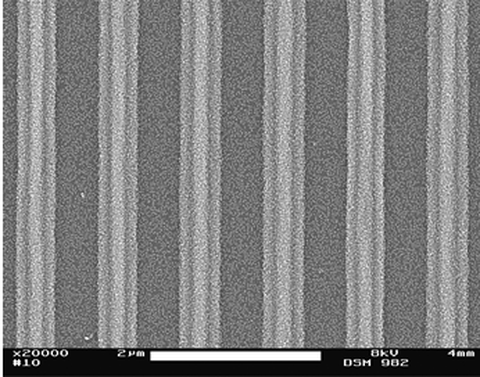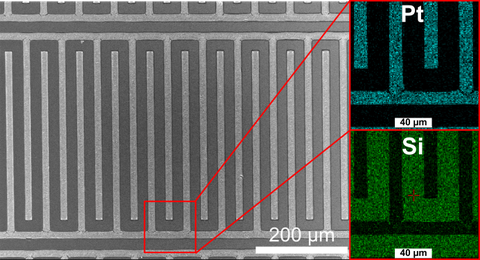Light and Surfaces
Table of contents
a) Precursor development
Printing inorganic materials requires the development of molecular precursors with engineered viscosity, wetting behavior and a thermal conversion mechanism into the targeted metal or oxide material without the formation of carbon side products (Fig. 1). The team has developed customized precursors for platinum, silver, gold and oxide coatings (TiO2, SnO2:Sb, etc.) with high transparency and conductivity.

Fig. 1: Customized synthesis of complex molecular precursors for surface coatings
Technologies and applications
- Printing
- Sol-Gel Processing
- Dip-coating
- Spin-coating
- Transparent conductive surfaces
- Semiconductor coatings
- Catalytic coatings
Links
http://pubs.rsc.org/en/content/articlelanding/2015/tc/c4tc02418d#!divAbstract
b) New optoelectronic materials
We develop new absorber materials for solar cells and OLED interfaces as well as new transparent conductive oxide materials.

Fig. 2: New optoelectronic materials: Structured GZO film as electrode for OLEDs
Technologies and applications
- Solar cells
- OLED interfaces
Links
http://pubs.rsc.org/en/content/articlelanding/2011/jm/c1jm10886g#!divAbstract
http://pubs.rsc.org/en/content/articlelanding/2016/cc/c5cc10455f#!divAbstract
c) Nanostructured surfaces
We use nanoimprint technology and µ-contact printing in combination with sol-gel and precursor chemistry for the generation of nanostructured surfaces. We achieve high transparency and high electronic conductivity for optoelectronic applications. Light management is an important target for OLEDs. The periodicity of the surface can tune the efficiency and color of the flat display. Interdigital printed electrodes are ideal components for electrochemical sensors.

Fig. 3: Structured platinum surfaces by nanoimprint lithography for electrochemical sensor applications
Technologies and applications
- Transparent conductive grids
- Sensor electrodes
- Light management
Links
http://pubs.rsc.org/en/content/articlelanding/2013/TC/C3TC00826F#!divAbstract
